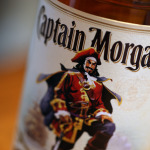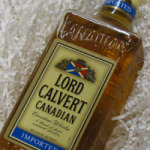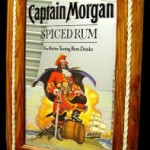An iconic brand still alive and kicking
Seagram’s 7 Crown launched an interesting event last week — the first official National Dive Bar Day. No surprise that the launch date was 7/7. So, there’s lots to tell about the brand and this event. Let’s start with the event.
Dive Bars
Here’s how the folks at Diageo described this brand promotion:
“The Dive Bar is an American institution: where long-lasting memories are created, where people-watching is imperative, and where the greatest stories and a come-as-you-are attitude, live. Seagram’s 7 Crown will raise a glass to these historic hidden gems found across America, marking the first official National Dive Bar Day, fittingly taking place on July 7th, 2018 – in celebration of the quintessential Dive Bar drink, the 7&7.”
There are lots of definitions of a Dive Bar, some negative like this one in the Urban Dictionary: “A well-worn, unglamorous bar, often serving a cheap, simple selection of drinks to a regular clientele.” Whew, that’s mean.
The one that comes closest to what I think, is from my friend, Gaz Regan:
“Dive bars …. are bare bones joints where guests are treated equally whether they arrived wearing greasy overalls, or tuxedos … when the guest wants a quick shot and a beer before heading out to some swank affair. These places are great equalizers. The filing clerk can tell the CEO how to run the company better in a dive bar. And in a real dive, the CEO will actually listen.”
Linking Seagram’s 7 and Dive Bars makes sense on many levels. First, the brand is an icon and an important part of America’s drinking history. It’s a natural link and since the purpose of Dive Bar Day is to support these places through the National Trust for Historic Preservation, it makes sense.
In addition, Dive Bars suggest fun, camaraderie, and good times. According to Jason Sorley, Diageo Brand Director for Seagram’s 7, both the brand and Dive Bars have a storied past and have been an important part of the American drinking culture. (Here’s a list of the best dive bars in every state from Thrillist.)
Seagram’s 7 Crown
As I was doing my homework for this article, I walked into my favorite neighborhood package store and asked for a bottle. (Yeah, it’s been a long time since I bought one.) The owner, who’s a friend, looked at me as though I had lost my mind. “Seriously?” he said, “You come in for all kinds of fancy shmantzy whiskies and gins and now you want Seagram’s 7? I don’t carry that. I remember it but who drinks that these days?”
I grumbled something about how any store can fail to stock an American liquor icon and one that millions of folks remember as their drinking “training wheels.” In fact, for decades, the 7&7 (Seagram’s 7 and 7 Up) was the drink of choice for entry level drinkers. It tastes great and is easy to drink. But, alas, many other booze products have usurped that esteemed rite of drinking passage.
So, I for one am delighted that Diageo is working to bring that brand back.
Let’s Look at Some Numbers
One of the things that I’ve learned about the booze business is that it’s hard, if not impossible, to kill a brand based on its sales. Sure, a manufacturer can end the life of a brand, but, the marketplace itself will rarely if ever kill a brand.
According to the ex-Seagram people I spoke with who worked on the brand, at its peak, Seagram 7 Crown reached well over 8 million (9-litre) cases in the late 1970s. Even by 1990, when whiskies were losing dramatically to vodka, the brand sold close to 4 million cases. As to my retailer friend’s view that the brand is dead, guess what? Today Seagram’s 7 still sells in the 2 million case range. In fact, according to Shanken’s Impact, the brand is in the top 30 leading spirit brands in the US. So there, Mr. Retailer!
The Brand’s History
To stay with the numbers for a moment…
Seagram’s 7 was the 1st brand ever to reach 1 million cases. The 1st to sell 100 million cases. And, over the years sold over 300 million cases in 1983. (See close up photo below.) We’re talking a multi-billion-dollar brand, boys and girls.

As the story goes, after prohibition and before WWII, Seagram introduced two blended American Whiskies — Seagram 5 Crown and 7 Crown. Why the name Seagram 7? The apocryphal story is that Sam Bronfman (the Seagram patriarch, known as Mr. Sam) was presented with a range of candidate products for a blended whiskey and ended up choosing the one he liked — the 7th one presented to him.
Whatever happened to Seagram’s 5? During the Second World War the government asked distillers to cut back on alcohol production to aid the war effort. Seagram’s 5 was not doing as well as 7, so it was discontinued. Also, Seagram’s 5 was higher in alcohol at 86.8 proof.
How did the 7&7 come to be? (Another apocryphal story.) Well, those were the days when distributor sales reps tried to build brands rather than just fill orders. So, an aggressive sales rep thought it would be clever to link the 7 in 7up with Seagram’s 7. Much to his surprise it was great and the 7&7 was born.
Here’s What Else I Can Tell You
- At Seagram and since then, I’ve heard it referred to differently. Internally, we referred to the brand as 7 Crown. Among consumers and generally outside of Seagram it was called Seagram 7 or just plain ‘7.’
- The event linking the brand to Dive Bar Day was organized and run by Greg Leonard and his company Proof Media Mix. Greg is a former Seagram and Diageo PR and activation executive and, for my money, the best in the business at making ideas and events come alive,
- Did you know that Seagram’s 7 — a blended American Whiskey contains a large percentage of grain neutral spirits? Check the packaging, right on the front label it says “75 per cent Grain Neutral Spirits.” Even back in the day, GNS was a significant proportion of Seagram’s 7. In fact, the US regulations for blended whiskey allows a blend of straight whiskies and up to 80 percent neutral spirits.
- I’ve often heard it said that brands have a life cycle — from creation to maturity to decline, and ultimately gone. Maybe. Here’s a brand that had its heyday in the 1960s and 70s and is still alive and kicking. Like I said, manufacturers kill brands, consumers don’t.
* * *
I wish to thank the following people whose thoughts and experiences helped shape this article… Rob Warren, Greg Leonard, and John Hartrey. Special thanks to John for sharing his collection of Seagram memorabilia and photos. In fact, John has the dubious distinction of being the last Seagram’s 7 brand director at Seagram.










